Warmblood horses are utilitarian, athletic, and true performers – they excel in equestrian sports such as dressage, showjumping, three-day-eventing, and combined driving. Let’s dig a little deeper into 9 of the most popular warmblood breeds.
Table of Contents
What is a Warmblood Horse?
Horses are mammals and therefore warm-blooded by nature. So what is a “warmblood” horse?
“Warm-blood”, “cold-blood” and “hot-blood” are informal terms that refer to a horse’s temperament, genetic disposition, and purpose.
| Description | Characteristics | Breed Examples |
|---|---|---|
| Hot-blooded Horse | Light-bodied, tend to be nervous, excitable and energetic, often used used for racing. | Arabians, Thoroughbreds, Anglo-Arabian, Akhal Teke |
| Warm-blooded Horse | Middle body weight, athletic, versatile, even-tempered, used for equestrian sports. | Hanoverian, Dutch warmblood, Trakhener, Holsteiner, Oldenberg, Quarter Horse, Morgan, Paint Horse, Tennessee Walker |
| Cold-blooded Horse | Heavy body weight, strong, gentle and calm, used for agricultural or harness work. | Draft breeds: Clydesdale, Belgian, Shire, Percheron |
“Warmblood” refers to a type of horse used for a specific purpose, rather than a specific breed. Any middle-weight horse can technically be considered a “warmblood” – that is, any horse that isn’t a draft or light racing breed.
However, when discussing warmblood breeds, most people are referring to the athletic horses specifically produced for equestrian sports: dressage, eventing, showjumping, and combined driving.
9 Popular Warmblood Breeds:
Hanoverian
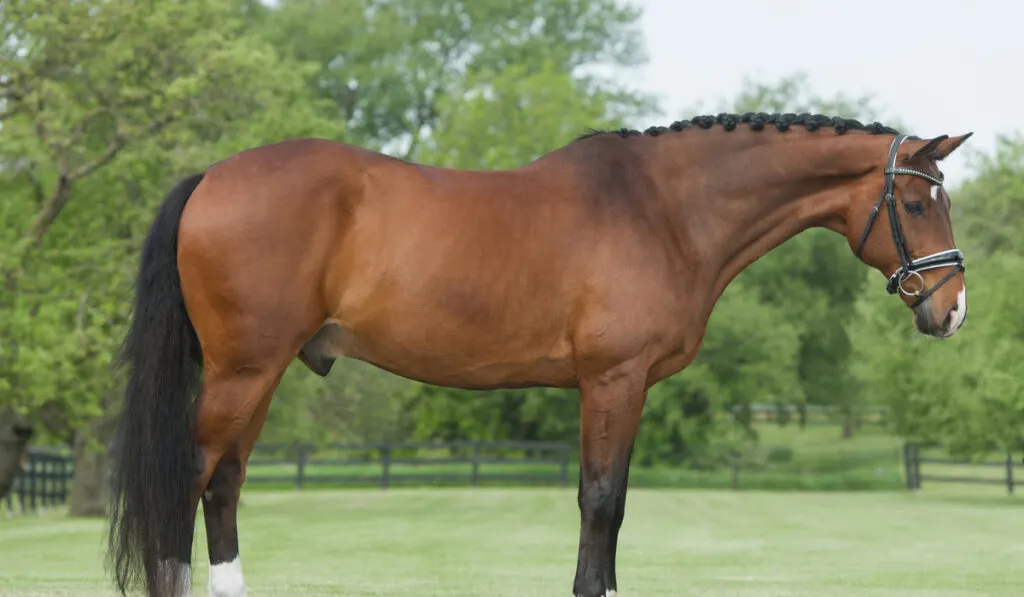
- Country of origin: Germany
- Average height: 16-16.2 hands
- Foundation breeds: Holsteiner, Thoroughbred, Cleveland Bay, Neopolitan, Andalusian, Prussian, Mecklenburg
The Hanoverian is one of the oldest warmblood breeds. Originating in Germany, the Hanoverian pulled fine carriages and served as a military horse. Breeders were looking for horses that could look elegant pulling a coach, but also animals that were heavy enough to handle cavalry duties.
Now, the Hanoverian is a very popular well-rounded sport horse; it competes in dressage, eventing, show-jumping, and combined driving. These horses excel at dressage due to their “light and elastic gaits characterized by a ground-covering walk, a floating trot, and a soft, round, rhythmic canter.”
Hanoverian Brand
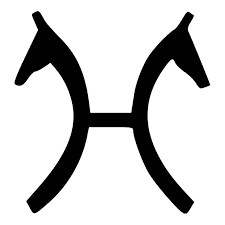
The brand on a Hanoverian horse resembles an H. It is two horses, looking opposite directions, joined by a central bar.
Holsteiner
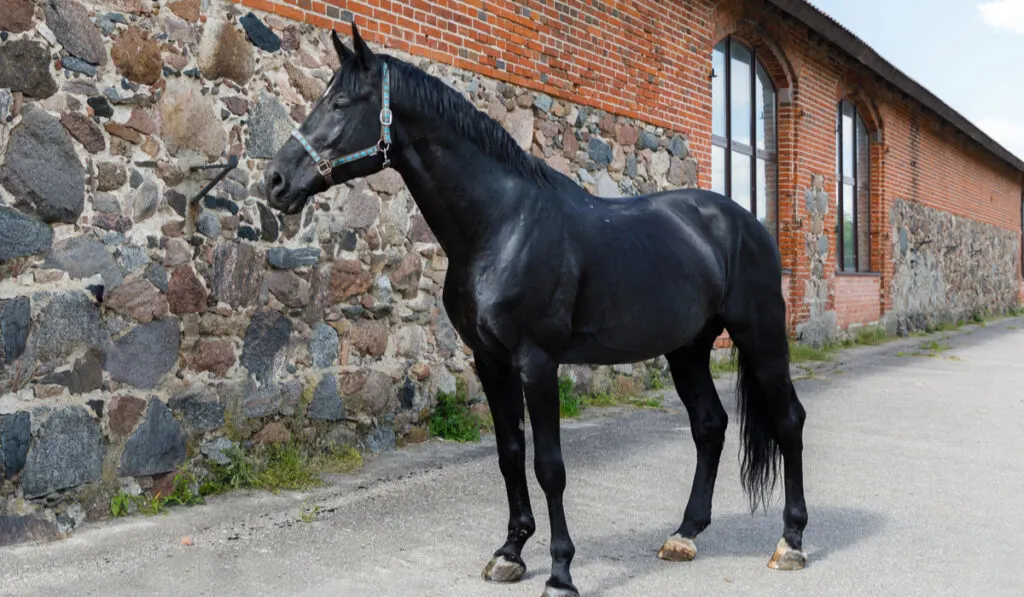
- Country of Origin: Germany
- Average Height: 16-17 hands
- Foundation Breeds: Thoroughbred, Neopolitan, Spanish horses, Cleveland Bays, Yorkshire coach horses
The foundation of the Holsteiner breed began in a monastery in Germany almost 700 years ago. (source) The monks began breeding a horse that could serve the agricultural needs of a farm, but that was also suitable for military combat, as the fighting style shifted towards cavalries.
With a lot of help from Thoroughbred and Arabian influences, the Holsteiner is a popular and effective sport horse, rather than a heavy pulling horse. While they are not the most popular warmblood breed, they are particularly effective in show jumping and show hunter events.
Holsteiner Brand

The brand on a Holsteiner horse resembles an H inside a shield with a crown. Contained within a shield is the letter “H”. Each side of the “H” is curved outwards and a central bar connects the two. On top of the brand is a mark resembling a crown.
Trakehner
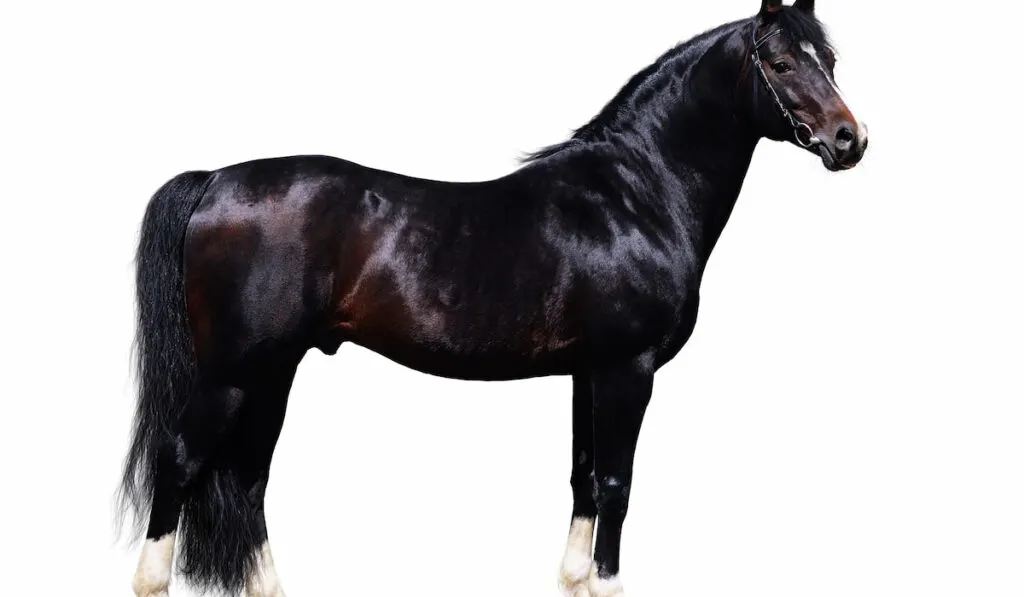
- Country of origin: East Prussia
- Average height: 15.2-17 hands
- Foundation breeds: Schwaikenpferd, Turkish horses, Arabian, Thoroughbred, Hanoverian
World War II was devastating for this breed. As the Soviets conquered East Prussia, refugees fled west to the Baltic Sea – in the dead of winter, with few supplies and 800 of their best horses.
By the time they made it across the frozen landscape, only 100 had survived. At the end of the war, only a few hundred of the hardiest Trakehners remained. (source)
They are sensitive, intelligent, and flashy movers, which makes them perfect for dressage. They also have the speed and stamina to handle the rigors of eventing.
A lighter warmblood, Trakehners are often added to other warmblood breeds to “refine” them for speed and agility. Because their studbook is closed, Trakehners are one of the only warmblood horse breeds that are considered a “true breed.”
Trakehner Brand
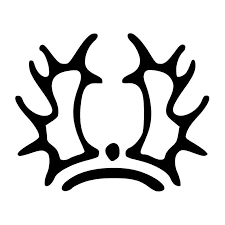
The brand on a Trakehner horse resembles antlers on top of the head on a stag. There is a central dot between the two sets of antlers and underneath is an arc.
Selle Français
- Country of origin: France
- Average height: 16-16.3 hands
- Foundation breeds: Anglo-Norman, Thoroughbred, Norfolk Trotter, Charolais, Anglo-Arab
Like other warmblood breeds, the Selle Français started as a carriage and military horse. But, as needs for utilitarian horses dwindled, the breed evolved into an impressive jumping sport horse.
Three-day-eventing and show jumping require “lively, responsive, and powerful” horses; and these are the sports in which these horses excel. They are also used in France for steeplechase racing, dressage, competitive trail riding, vaulting and combined driving.
Selle Français Brand
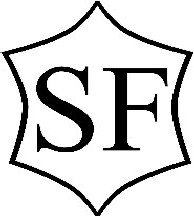
The brand on a Selle Français horse is a six pointed shield with the letters “SF” in the middle. The star shape resembles an American Sheriff badge.
Irish Sport Horse
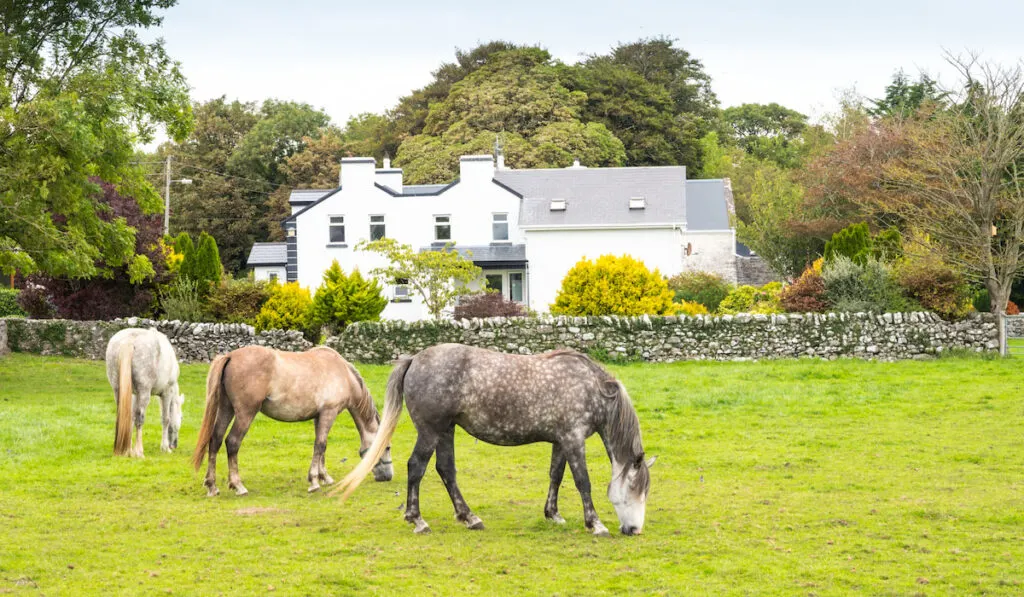
- Country of origin: Ireland
- Height: 16-17 hands
- Foundation breeds: Thoroughbred, Irish Draught
Irish sport horses are special because they are produced by crossing two breeds: the Irish draught and the thoroughbred. Irish draughts aren’t heavy draft horses in the traditional sense; while they were bred for agricultural work, they needed to be sporty enough to chase foxes through fields and jump fences.
When crossed with a thoroughbred, an Irish draft becomes an Irish sport horse – a “versatile horse with a great personality, excellent movement, and incredible jumping ability.” (source) They are said to be athletic and feisty enough to navigate a tricky cross-country course, but quiet and calm enough for a child to ride.
Irish Sport Horse Brand
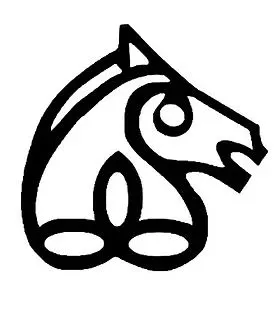
The brand for an Irish Sport Horse resembles a Celtic drawing of a horse head.
Oldenburg
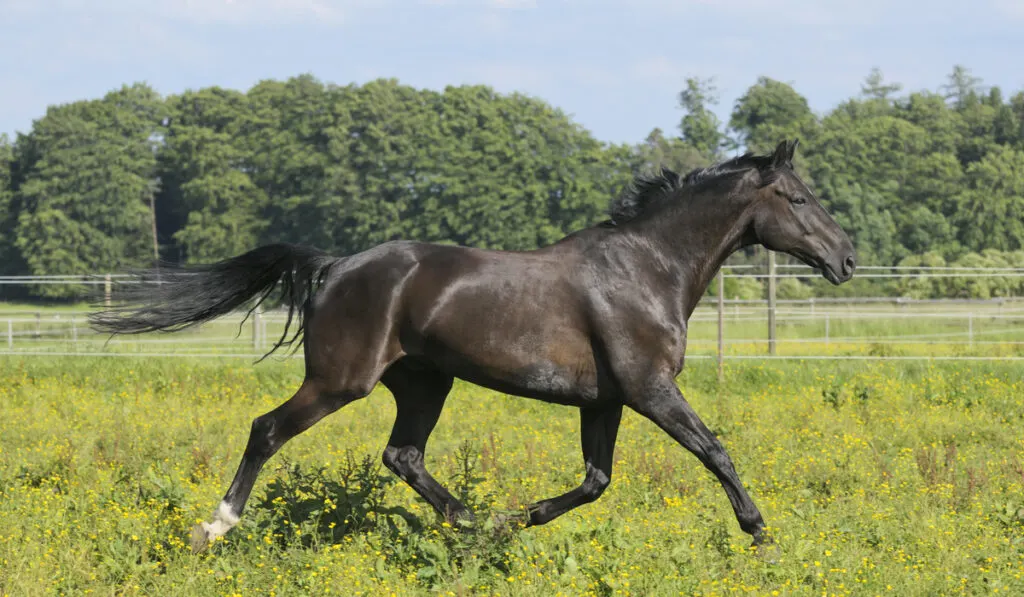
- Country of origin: Germany
- Average height: 16-17.2 hands
- Foundation breeds: Fredricksborger, Turkish horses, Neopolitan, Andalusian, Anglo-Arab, thoroughbred
The Oldenburg began as a “luxury carriage horse”: a high-stepping, flashy coach-puller that was strong enough to work on the farm. (source) Once equestrian sports became more of a leisure activity and less of a necessity, breeders focused on adding lighter horses with expressive gaits to the bloodlines.
For the modern Oldenburg, “quality is the only standard that counts”— the Oldenburg studbook is one of the largest in Germany, and is based on performance (rather than conformation). They boast “expressive heads and long legs with expressive, elastic gaits,” making them successful in dressage.
Oldenburg Brand
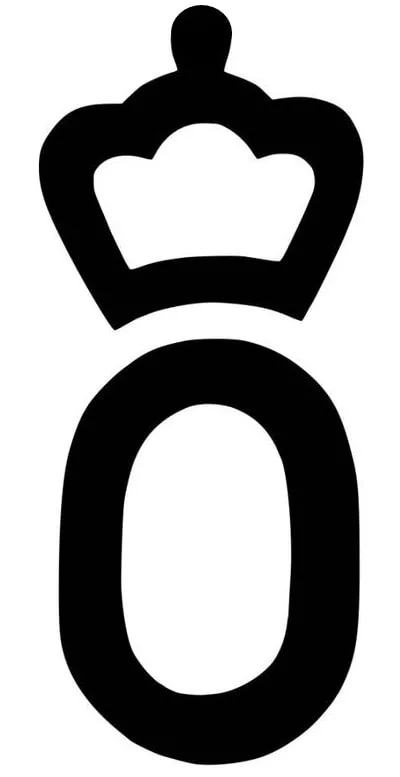
The brand on an Oldenburg horse resembles the letter “O” with a crown. The crown is just slightly detached from the O.
Dutch Warmblood:
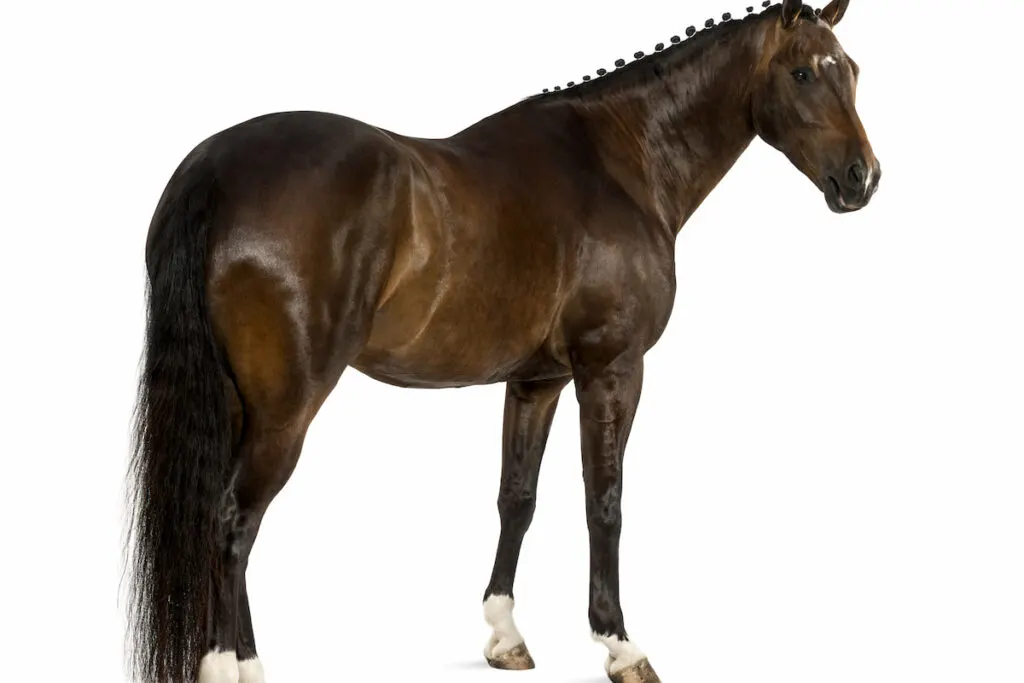
- Country of origin: Netherlands
- Average height: 15.3 hands and up
- Foundation breeds: Gelderlander, Groningen, Dutch riding horse
Like most warmblood breeds, Dutch warmbloods began as carriage horses. Two warmblood breeds were popular in the Netherlands: the Gelderlander and the Groningen. Later, the studbook merged to include the Gelderlander, the Dutch harness horse, and Dutch warmbloods specifically bred for either dressage or jumping.
Dutch warmbloods are top competitors, and they are true performance horses. They consistently lead the pack in the World Breeding Federation for Sport Horses rankings, especially in show jumping and dressage. The Dutch warmblood Valegro holds the World Record for Grand Prix Freestyle Dressage. They are cooperative, talented, and brave, which makes them a favorite for professionals and amateurs alike.
Dutch Warmblood Brand
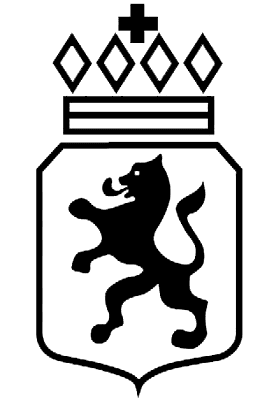
The brand on a Dutch Warmblood is a shield surrounding a lion standing on it’s back feet. Because Dutch law has made branding illegal, only the oldest members of the breed actually carry the brand. (source) In the US, the KWPN allows branding for horses 3 years old and older that have been inspected (source).
Belgian Warmblood
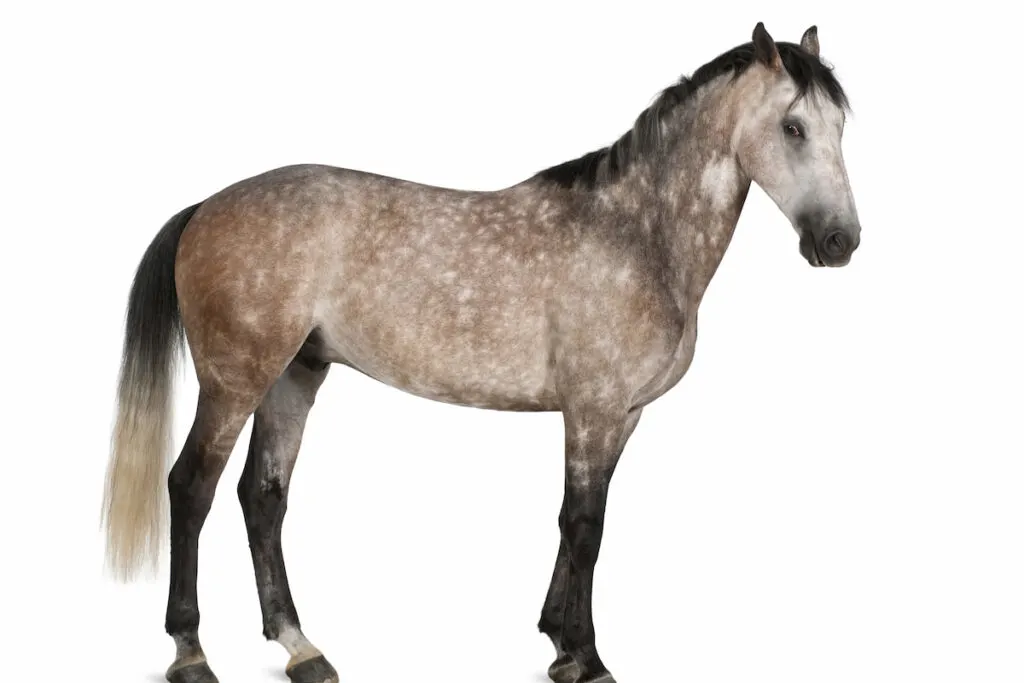
- Country of origin: Belgium
- Average Height: 15.1-17 hands
- Foundation breeds: French and German jumping horses, Hanoverians, Holsteiners, Thoroughbreds
Horse breeding laws in Belgium were strict, as the government wanted to protect the heritage of the Belgium draft horse. Once breeders were allowed to produce lighter riding horses, they imported warmbloods from neighboring countries, and the Belgian warmblood was born.
Because Belgian warmbloods are such a melting pot of other breeds, their defining characteristics are based on performance. This is common for warmblood horses, such as the American warmblood (in which a registered thoroughbred or Arabian could technically earn an American warmblood designation).
Nonetheless, Belgian warmbloods share common traits: pleasant to ride, good conformation, an “unobjectionable character.” (source) Belgian warmbloods are “bred to perform.” After combining generations of top warmblood bloodlines, the Belgian warmblood studbook consistently produces top performers in show jumping, eventing, and dressage. They are especially known for their jumping abilities, as they are ideally “always jumping horses.”
Belgian Warmblood Brand
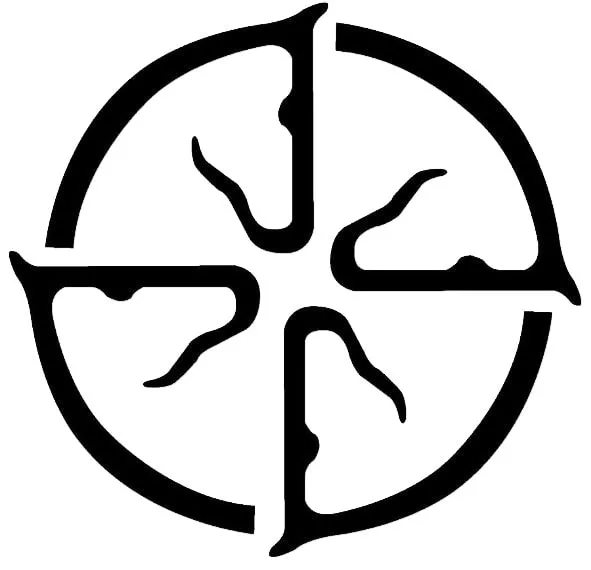
The brand on a Belgian Warmblood brand might look at first like the Google Chrome icon or an odd shaped compass. If you look closely though, you can see that it is four horse heads aligned in a circle.
Westphalian:
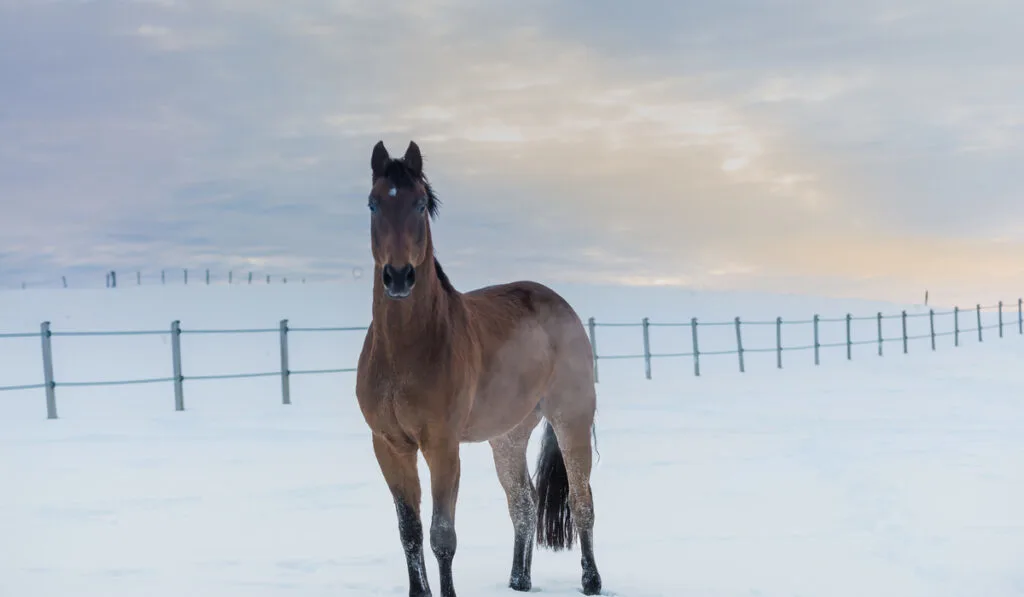
- Country of origin: Germany
- Average height: 15.3-17 hands
- Foundation breeds: Rhinelander, Thoroughbred, Oldenburg, East Prussian horses
Westphalian horses hail from the Westphalia region of Germany. They share a studbook with the Rhinelander, another German warmblood breed. Originally serving as a lighter riding horse, breeders began to produce heavier all-purpose farm horses as the needs of the area changed.
Eventually, the farming Westphalian was phased out in favor of the heaviest draft horses, and enthusiasts began to breed them for equestrian sports instead. While Westphalians consistently rank highly in the WBFSH rankings, they often serve as pleasure horse for amateur riders. These horses are good movers, easy to ride, and are versatile enough to excel in any discipline – and good-tempered enough for any handler.
Westphalian Brand
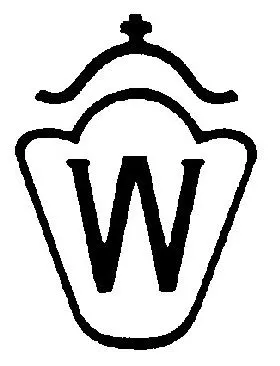
The brand for a Westphalian horse looks like a W surrounded by a shield. The shield has a crown with a central cross.
Related Questions
Are all warmbloods branded? Most Warmblood horses don’t have brands. Warmblood registries that have a breed specific brand typically have very strict pedigree, inspection and/or performance requirements that must be met in order for a horse to receive that breeds brand.
What is the difference between a warmblood horse and a thoroughbred? A thoroughbred is a hot-blooded breed commonly used for racing (but can excel at other disciplines as well). A warm-blood is a cross between a hot-blooded breed (like Thoroughbreds and Arabians) and a cold-blooded breed (like Irish Draughts, Shires, Percherons, etc). Crossing the two typically increases size while also resulting in a calmer, easier to train horse.
Are standardbred horses warmbloods? Standardbred horses, like most gaited breeds, are warmbloods.
Why do some warmblood brands have numbers? Warmbloods that have a breed brand as well as a number typically originate from Germany where individual horse breeding districts are identified by number. This number refers only to the district as multiple breeds can be bred in a single district.
Final Thoughts
Warmbloods are versatile performance horses. Regardless of which warmblood breed you’re considering, these horses make strong, agile, and good-natured companions, and they excel in the show ring. Suitable for professionals, amateurs, or pleasure riders, a warmblood is a solid choice.
Related Posts
- Equine Royalty: Thoroughbred Horse Breed Profile
- 10 Easy Horse Obstacles Under $20
- Stall Guards: Complete Guide
Source:
- http://www.wbfsh.org/GB/Rankings/WBFSH%20rankings.aspx


